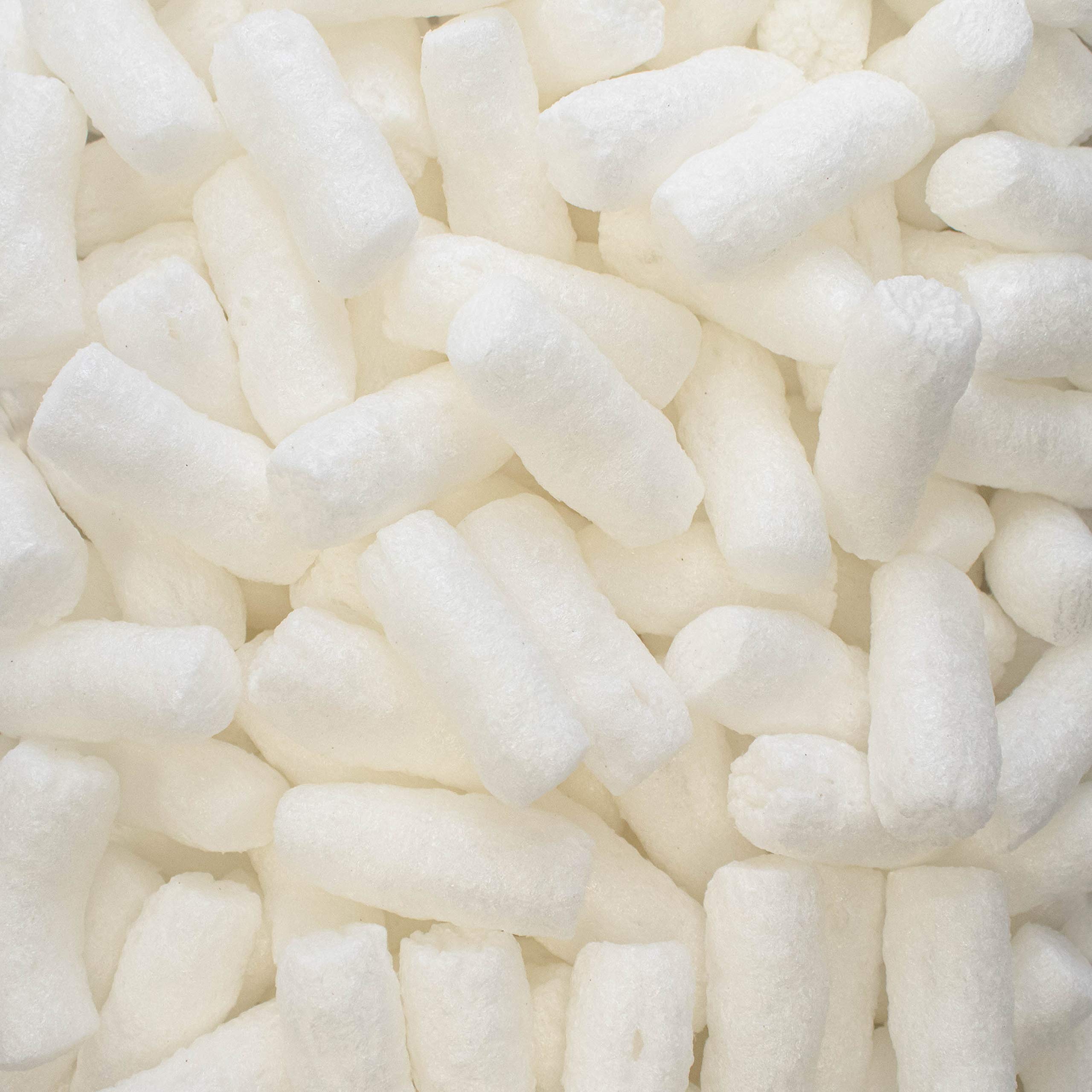The Ultimate Guide: How to Easily Dispose of Biodegradable Packing Peanuts
Biodegradable packing peanuts have gained significant attention in recent years as a sustainable alternative to their non-biodegradable counterparts. While these foam-like packaging materials serve the purpose of protecting fragile items during transit, they pose a severe environmental threat due to their lack of biodegradability. Fortunately, there is now a solution at hand that allows us to dispose of packing peanuts without harming the planet. In this ultimate guide, we will delve into the world of biodegradable packing peanuts and explore how they can be easily disposed of in an eco-friendly manner. We will discuss the detrimental effects of traditional packing peanuts on our environment and highlight the benefits that come with switching to their biodegradable counterparts. Moreover, we will provide you with a step-by-step guide on composting these packing peanuts and offer alternative ways to repurpose them creatively. By the end of this comprehensive article, you will not only be equipped with knowledge on how to dispose of biodegradable packing peanuts responsibly but also feel inspired by stories of individuals and businesses making sustainable choices in packaging. Let us embark on this journey together, discovering how small changes can make a big impact when it comes to caring for our planet.
The Problem with Traditional Packing Peanuts
When it comes to packing fragile items, traditional packing peanuts have long been a popular choice. These small, lightweight foam pieces provide cushioning and protection during transit. However, there is a dark side to these seemingly innocent peanuts that we cannot ignore.
One of the major issues with traditional packing peanuts is their lack of biodegradability. Made from expanded polystyrene (EPS), these peanuts can take hundreds of years to break down in landfills. As they accumulate over time, they contribute to the growing problem of plastic pollution, harming our environment and wildlife.
Moreover, EPS is derived from non-renewable fossil fuels, perpetuating our dependence on finite resources. The manufacturing process also releases harmful greenhouse gases into the atmosphere. This alarming combination of environmental damage and unsustainable sourcing calls for a more responsible alternative.
Another drawback of traditional packing peanuts is their limited reuse potential. Once used, these peanuts are difficult to recycle due to contamination issues when mixed with other plastics. This results in them mostly ending up in landfills where they sit indefinitely as a burden on our planet’s health.
Introducing Biodegradable Packing Peanuts: A Sustainable Solution
As the world becomes increasingly aware of the detrimental environmental impact of traditional packaging materials, the need for sustainable alternatives has become more imperative than ever. It is in this context that biodegradable packing peanuts have emerged as a revolutionary solution that not only addresses the pressing concerns of waste management but also promotes a greener and more sustainable future.
Biodegradable packing peanuts are made from organic, plant-based materials such as cornstarch or wheat protein, which are fully compostable and non-toxic. Unlike their Styrofoam counterparts, these eco-friendly peanuts break down naturally over time when exposed to moisture and microorganisms. This means that they will not accumulate in landfills or clog up waterways like traditional packing materials often do.
One remarkable feature of biodegradable packing peanuts is their ability to dissolve in water, leaving no trace behind. This quality significantly reduces the risk of environmental pollution while ensuring convenient disposal for individuals and businesses alike. Say goodbye to guilt-ridden garbage bags filled with non-recyclable foam materials; biodegradable packing peanuts provide an ethical alternative that aligns with our growing commitment to sustainability.
Beyond their eco-friendly nature, these ingenious packing peanuts offer exceptional cushioning properties that protect fragile items during transportation. They effectively absorb shocks and vibrations, acting as a reliable barrier between your precious belongings and potential damage during transit. With biodegradable packing peanuts, customers no longer have to choose between protecting their items and safeguarding the environment – it’s a win-win situation!
Benefits of Using Biodegradable Packing Peanuts
Biodegradable packing peanuts offer a multitude of benefits that make them an exceptional choice for environmentally conscious individuals and businesses. Not only do these innovative packaging materials provide excellent protection for fragile items, but they also contribute to the preservation of our planet in several significant ways.
One of the key advantages of using biodegradable packing peanuts is their eco-friendly nature. Unlike traditional packing peanuts made from polystyrene, which can take hundreds of years to decompose, biodegradable counterparts are designed to break down naturally within a short period. This means that by opting for biodegradable options, you’re actively reducing the amount of waste that ends up in landfills and minimizing your carbon footprint.
In addition to their environmental benefits, biodegradable packing peanuts offer superior versatility and functionality. These peanuts are lightweight yet sturdy, allowing them to provide ample cushioning during transit without adding unnecessary weight or bulkiness to packages. Furthermore, they are static-free and dust-free, ensuring that your valuable items remain safe from scratches or damages associated with static electricity or dust accumulation.
Another noteworthy advantage is the ease with which biodegradable packing peanuts can be disposed of responsibly. Unlike traditional counterparts that require specialized recycling facilities or end up polluting waterways when improperly discarded, biodegradable options break down harmlessly in composting environments or can be dissolved in water without leaving any harmful residues behind. This not only simplifies the disposal process but also eliminates potential negative impacts on wildlife and ecosystems.
Understanding the Composting Process for Packing Peanuts
Composting is a brilliant natural process that transforms organic materials, such as food scraps and yard waste, into nutrient-rich soil. When it comes to disposing of biodegradable packing peanuts, composting is an eco-friendly method that allows these materials to return to the earth in a beneficial way.
The composting process involves four essential components: carbon-rich materials (known as browns), nitrogen-rich materials (known as greens), moisture, and oxygen. Packing peanuts made from biodegradable materials can serve as an excellent carbon source in the compost pile. This means they provide the necessary structure and balance required for successful decomposition.
When mixed with other organic waste like fruit peels, coffee grounds, or grass clippings, packing peanuts contribute to a well-balanced compost pile. The brown material in the packing peanuts provides carbon while greens add nitrogen—creating an ideal environment for microorganisms to break down these components over time.
During the composting process, microorganisms like bacteria and fungi feast on the organic matter present in the pile. As they consume this material, they release enzymes that break it down further into simpler compounds. Eventually, through microbial action and decomposition, biodegradable packing peanuts transform into nutrient-rich hummus—the dark crumbly substance commonly associated with healthy soil.
Step-by-Step Guide: How to Compost Biodegradable Packing Peanuts
Composting biodegradable packing peanuts is an excellent way to reduce waste and contribute to a healthier environment. By following these simple steps, you can turn those pesky packing peanuts into nutrient-rich compost for your garden or plants.
Step 1: Separate the Packing Peanuts
Start by separating the biodegradable packing peanuts from any non-biodegradable materials. It’s crucial to ensure that only the biodegradable ones are included in the composting process. Remove any plastic or foam-based packing peanuts and set them aside for proper disposal.
Step 2: Shred the Packing Peanuts
To facilitate faster decomposition, it’s advisable to shred the biodegradable packing peanuts into smaller pieces. Consider using a shredder or manually break them down into manageable sizes. By increasing their surface area, you provide more exposure to microorganisms that aid in decomposition.
Step 3: Create a Compost Bin
Select an appropriate location in your garden or backyard for your compost bin. Ideally, choose an area with good drainage and partial sunlight. You can either purchase a compost bin or make one yourself by using wooden pallets or wire mesh. Ensure proper airflow and insulation within the bin.
Step 4: Layering and Maintenance
In your compost bin, start by creating a base layer using organic materials such as twigs, leaves, or straw. Next, add a layer of shredded packing peanuts on top of this base layer. Remember to alternate between green (nitrogen-rich) and brown (carbon-rich) materials for optimal decomposition.
Maintain moisture levels by periodically watering your compost pile if necessary. Turn the pile every few weeks to introduce air and speed up the decomposition process. This turning process also helps distribute heat evenly throughout the bin, promoting efficient breakdown of materials.
Before you know it, those biodegradable packing peanuts will transform into nutrient-dense compost that can be used to enrich your soil, nourish your plants, and promote a flourishing garden. Composting is not only environmentally friendly but also a fulfilling experience that empowers individuals to make a positive impact on our planet.
Best Practices for Disposing of Biodegradable Packing Peanuts
Packing peanuts, whether biodegradable or not, should always be handled with care to ensure proper disposal. By adopting the following best practices, you can minimize environmental impact and contribute to a more sustainable future:
1. Reuse and Repurpose
Before considering disposal options, it’s important to explore opportunities for reusing or repurposing biodegradable packing peanuts. These versatile materials can serve various purposes beyond packaging.
For example, you can repurpose them as protective cushioning when storing fragile items in your home. Alternatively, consider donating them to local businesses or organizations that may have a use for them in their shipping operations.
By finding new ways to give these packing peanuts a second life, we can reduce waste and extend their usefulness while promoting sustainability.
2. Check Local Recycling Programs
In many cases, biodegradable packing peanuts are not accepted in regular curbside recycling bins due to variations in recycling processes and facilities. However, some local recycling programs do accept these materials.
To determine if your community has specific guidelines on how to recycle biodegradable packing peanuts, check with your local waste management authority or visit their website. They may provide drop-off locations or collection events where you can bring the packing peanuts for proper recycling.
Remember that adhering to these guidelines helps ensure that the packing peanuts are recycled correctly without causing harm to the environment.
3. Share with Others
If you find yourself with surplus biodegradable packing peanuts after reusing and checking local recycling programs, consider sharing them within your community.
“One person’s trash is another person’s treasure” – this adage holds true for packing peanuts as well. Spread the word among friends, family, and neighbors about your surplus packing peanuts and offer them for reuse.
This small act of kindness not only prevents these materials from ending up in landfills but also encourages a culture of resourcefulness and eco-consciousness in your community.
4. Educate Others
An essential aspect of proper disposal involves educating others on the importance of biodegradable packing peanuts and their impact on the environment.
By sharing your knowledge and experiences with others, you can inspire them to adopt responsible disposal practices. Raise awareness through social media platforms or local community groups, emphasizing the benefits of biodegradable packaging materials over traditional options.
Remember that positive change is driven by collective action. Empowering others with information enables them to make informed choices that contribute to a greener future.
Alternative Uses for Biodegradable Packing Peanuts
Biodegradable packing peanuts, with their lightweight and versatile nature, offer a myriad of creative possibilities beyond their intended purpose. By exploring alternative uses for these eco-friendly gems, we can not only reduce waste but also bring a touch of ingenuity to our everyday lives.
1. Arts and Crafts
Unleash your inner artist and let the packing peanuts become your muse! These little wonders can be transformed into unique art pieces or used as materials for various craft projects. Their spongy texture makes them ideal for creating sculptures or even adding dimension to paintings. With a bit of imagination, you can turn these humble peanuts into eye-catching decorations that will surely be the envy of your friends.
Creative Tip:
Try dipping the packing peanuts in water-based paint before using them in your artwork. This will add a burst of color and create an intriguing visual effect that is sure to captivate viewers.
2. Gardening Aid
The biodegradable nature of these packing peanuts makes them an excellent addition to any green thumb’s toolkit. When placed at the bottom of large pots or planters, they help improve drainage, prevent soil compaction, and promote healthier root growth by allowing excess water to escape more efficiently.
Creative Tip:
Add a sprinkle of crushed packing peanuts to homemade seedling mixtures to provide extra aeration and moisture retention—giving your seedlings the best possible start on their journey towards becoming flourishing plants.
3. Stress Relief Toys
In our fast-paced world, finding moments of relaxation is crucial for our well-being. Biodegradable packing peanuts can serve as stress relief toys that provide both tactile and visual satisfaction. The soft and squishy texture of these peanuts makes them ideal for squeezing, offering a soothing sensation that can help alleviate stress and anxiety.
Creative Tip:
Fill a small pillowcase or fabric bag with packing peanuts, tie it securely, and voila! You now have your very own homemade stress ball. Squeeze away the worries of the day while being mindful of the positive impact you’re making on the environment.
4. Educational Tools
Biodegradable packing peanuts can be incredible teaching aids, engaging both young minds and curious adults alike. Use them to demonstrate concepts such as air pressure by creating simple experiments that show how they compress or expand in different situations. These hands-on activities foster a love for science and sustainability while making learning enjoyable.
Creative Tip:
Create a colorful sensory bin by filling a container with various sizes and colors of biodegradable packing peanuts. Encourage children to explore different textures while discussing environmental responsibility—planting seeds for a future generation that values eco-consciousness.
The possibilities are truly endless when it comes to alternative uses for biodegradable packing peanuts. By embracing their versatility, we not only reduce waste but also add an element of creativity to our lives. So why not let your imagination run wild? It’s time to rethink these humble peanuts and unlock their hidden potential!
Inspiring Stories: How Individuals and Businesses are Embracing Eco-Friendly Packaging
In this section, we explore the heartwarming stories of individuals and businesses that have embraced eco-friendly packaging practices, demonstrating their commitment to environmental sustainability. These inspiring tales serve as a testament to the power of collective action towards a greener future.
Local Coffee Shop Adopts Compostable Packaging
In a bustling city neighborhood, a small coffee shop has caught the attention of its community by transitioning to compostable packaging for their to-go orders. With every cup and food container made from plant-based materials, they have become pioneers in reducing waste generated by single-use products. Customers appreciate their dedication to sustainability and often share their positive experiences on social media, creating a ripple effect that inspires other businesses in the area to follow suit.
Community-Led Recycling Initiatives Make an Impact
Across diverse communities around the world, passionate individuals have come together with one common goal: reducing packaging waste. These grassroots efforts take shape in various ways, such as establishing local recycling centers or organizing neighborhood collection drives for reusable packaging materials. By mobilizing fellow residents to actively participate in these initiatives, they have successfully diverted significant amounts of waste from landfills while fostering stronger bonds among community members.
Corporate Giants Champion Sustainable Packaging
Large corporations are also making strides in embracing eco-friendly packaging practices. Forward-thinking companies recognize that consumer preferences are shifting towards sustainable options, and they are keen to meet these demands. By investing in research and development, these corporate giants have successfully developed innovative packaging solutions using biodegradable materials or recycled content. Their commitment not only reduces environmental impact but also sets an example for others within their respective industries.
From Farm to Table: Sustainable Packaging in the Food Industry
In the culinary world, renowned chefs and restaurant owners are leading the way in adopting sustainable packaging practices. By sourcing locally and using packaging materials that minimize waste, these culinary pioneers ensure that their commitment to sustainability extends beyond the kitchen. The farm-to-table movement has gained momentum as consumers recognize the positive impact of supporting businesses that prioritize eco-conscious packaging. Through their delicious creations and responsible packaging choices, these establishments are strengthening the bond between people and planet.
Making a Lasting Impact: Choosing Environmentally Friendly Packaging Materials
When it comes to making a positive impact on the environment, choosing environmentally friendly packaging materials is a crucial step. By opting for sustainable options, we can significantly reduce our carbon footprint and contribute to the preservation of our planet. In this section, we will explore various eco-friendly alternatives to traditional packaging materials and highlight their benefits.
Biodegradable Packaging
One of the most popular choices for environmentally conscious individuals and businesses is biodegradable packaging. Made from natural materials such as plant starches or recycled paper, these packaging solutions are designed to break down easily without leaving harmful residues behind. By using biodegradable packaging materials, we can ensure that our waste does not linger in landfills for centuries but instead returns to nature.
Moreover, biodegradable packaging offers another advantage: it can be composted along with organic waste. This means that not only are we reducing the amount of waste sent to landfills but also creating nutrient-rich compost that can nourish plants and help them thrive. Imagine your waste transforming into something useful – it’s a small but powerful way to redefine our relationship with sustainability.
Recyclable Packaging
In addition to biodegradable options, recyclable packaging is another excellent choice for those looking to make a lasting impact. From cardboard boxes and paper wraps to glass containers and aluminum cans, recyclable materials can be repurposed into new products through an efficient recycling process.
The beauty of recycling lies in its ability to conserve resources and energy. When we recycle packaging materials, we reduce the need for raw material extraction and minimize pollution associated with manufacturing processes. By choosing recyclable alternatives, we participate actively in the circular economy model – one where resources are utilized efficiently, waste is minimized, and new products are created from old ones.
Sustainable Innovation
As our awareness of environmental issues grows, so does the innovation in sustainable packaging. New advancements in technology and materials have given rise to exciting alternatives such as mushroom-based packaging or seaweed-based films. These innovative solutions not only provide excellent protection for goods but also break down naturally without harming the environment.
By embracing these cutting-edge materials, we can promote a culture of sustainability and lead the way towards a greener future. Each time we choose an environmentally friendly packaging material, we contribute to a cleaner planet and inspire others to do the same. Remember, every small action counts!
Conclusion
In conclusion, the proper disposal of biodegradable packing peanuts is not only crucial for our environment but also serves as an opportunity for us to contribute to a more sustainable future. By composting these peanuts, we can harness their organic properties and close the loop in the packaging waste cycle. Imagine a world where every individual and business takes responsibility for their packaging choices, embracing eco-friendly materials that leave no trace on our planet. Together, we can make this vision a reality and leave a greener, cleaner world for generations to come.






